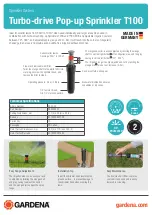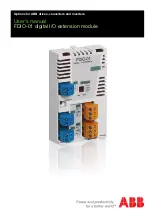
Chapter 8. Config: Network Settings
IP Video Door Station DS03M(P) Operation User Manual
34
SIP server / Port:
the network address of a SIP server (of a telephone exchange or a proxy
server) and the number of the port for data exchange. By default, the fields are empty.
NAT:
choose to allow the door station to operate via a STUN server. A STUN server helps to
localize the door station in Internet. By default, the item is disabled.
STUN IP / STUN port:
the network address and port of the STUN server.
ATTENTION!
STUN
doesn’t work correctly with symmetric NAT. In case of using symmetric NAT the IP address of the
STUN server differs from the endpoint address and therefore the NAT address, which is seen by the
STUN server, differs from the endpoint address, which is used for sending data to the user agent.
DTMF mode:
choose the mode of transmitting DTMF signals. The following modes are
available:
RFC2833
– sends DTMF tones within RTP packets.
In-Band
– DTMF signals are included in the media stream; it is only used for G.711
alaw/ulaw.
SIP INFO
– sends DTMF tones within INFO-messages.
Stream type:
choose the type of the stream transmitting during the SIP session between the
Guest and the Client. By default, a
main stream
is chosen for SIP 1, a
sub stream
for SIP 2.
“Audio
only” is also available.
Call recipient when pressing “Call” button:
it allows calling the recipient by pressing the
“Call” button on the door station panel. The function is disabled if no call recipients are chosen.
Call account:
it needs for calling the recipient(s) by pressing the “Call” button on the door
station panel. «SIP 1» is set by default. If the «SIP 1» account is not used, then the value changes to
«SIP 2» (and vice versa).
Call recipient #1-5:
specify the number of the recipient who needs to be called by pressing
the “Call” button on the door station panel. By default, the fields are empty.
Relay out 1-3 (DTMF):
specify the value of the DTMF signal; the relay outputs will be closed
as the signal will be received. For example, the door will be opened when pressing the phone button
specified in one of these fields. Up to 3 DTMF symbols are available (0-9, #, *). By default, the fields
are empty.
End SIP session after door opening:
choose to end the SIP session in case of receiving the
“open the door” command (in case of receiving the DTMF signal of closing the relay outputs by the
door station). The function can be set for each relay out separately. By default, the function is
disabled.
















































